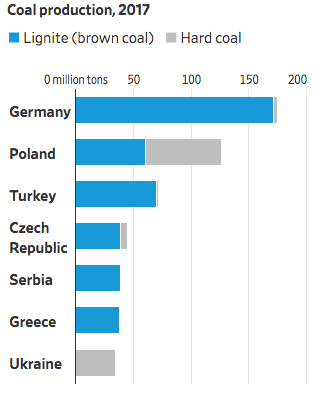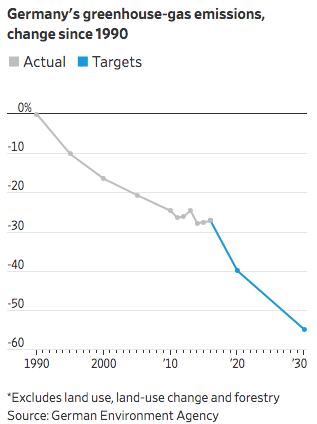According to the United Nations’s latest report, to meet the goals of the Paris agreement and reduce other risks, 2010 levels of global carbon dioxide emissions would need to be halved by 2030, and totally end around 2050. The Intergovernmental Panel on Climate Change (IPCC) indicates that either limiting or ending emissions is not enough—carbon dioxide already existing in the atmosphere would have to be captured to stop global warming from becoming more severe. The IPCC report finds meeting the carbon-reduction goals would require dramatic changes in how citizens get energy, how industries make everyday products, and how cities are designed. It would insert governments into the daily decisions of their citizens. Included in their recommendations are that people get out of cars—including electric cars and move to mass transit, and that laundry be line-dried, rather than dried using electric dryers.
Driving the U.N.’s concern is that global carbon dioxide emissions did not decline last year; they increased to record levels after several years of remaining flat, despite emissions cuts in the United States, the United Kingdom, and some other countries. Two industrialized countries that increased carbon dioxide emissions over the last several years are Germany and Australia. Both countries are heavily invested in wind power and solar energy, but are still using coal.
Germany
Germany is Europe’s largest brown coal producer and its brown-coal mines are expanding, which requires the government’s permission. Brown coal is a low-grade fuel also known as lignite, and is mined in large, open pits. Brown coal made up about 23 percent of the country’s energy supply last year and black coal added 14 percent. In the eastern state of Saxony, coal mining is popular and a key source of jobs, supporting between 20,000 and 30,000 jobs in the state, including positions at chemical plants. Germany generates about 40 percent of its electricity—a higher percentage than the United States—from coal-fired plants despite efforts with heavily subsidized renewable energy.

Although Germany’s carbon dioxide emissions began trending down in the 1990s, those emissions have increased since 2014. Germany indicated last year that it would not make its target of cutting greenhouse gas emissions to 40 percent of 1990 levels by 2020. As a result, Germany will have to purchase greenhouse gas emissions allowances for the years 2019 and 2020 from other European Union members that have met their targets. Germany already pays some of the highest electricity rates in the world owing to their massive subsidies for renewable energy.

Australia
The Australian government rejected the IPCC action to phase out coal power by 2050, indicating that renewable energy cannot replace baseload coal power. Australia’s deputy prime minister, Michael McCormack, stated that Australia should “absolutely” continue to use its coal reserves and that the government would not change policy “just because somebody might suggest that some sort of report is the way we need to follow and everything that we should do.” Coal provides over 60 percent of Australia’s electricity, 50,000 jobs and is Australia’s “largest export.”
Since former prime minister Malcolm Turnbull abandoned the emissions reduction component of the coalition’s national energy guarantee, Australia does not have a policy to reduce greenhouse gas emissions beyond 2020, when the renewable energy target will expire. Australia believes that it will reach its commitment to the Paris climate agreement by reducing its greenhouse gas emissions by 26 percent to 28 percent by 2030 based on 2005 levels without interventions. Australia represents just over 1 percent of global greenhouse gas emissions.
Australia has invested in wind and solar generating technologies. South Australia is heavily invested in wind and solar power, having closed coal plants in favor of lower carbon sources, with the outcome being that its residents are becoming energy poor due to skyrocketing electricity prices. The region’s reliance on subsidized, intermittent, and unreliable wind and solar power has resulted in skyrocketing power prices. Over 100,000 Australian families had their power cut off last year, and another 100,000 are on payment plans with their power providers, making over 200,000 residents energy poor in one of the most energy-rich countries in the world.
Conclusion
Some industrialized countries maintain coal an important resource for baseload power and are not willing to comply with the recommendations of the latest IPCC report. Americans are unlikely to acquiesce, either, to wide-ranging edicts from the U.N. body that include giving up their vehicles and hanging their clothes to dry.
Both Germany and Australia generate much of their electricity with coal and are not able to move off of the fuel for various reasons. Germany and South Australia have invested in wind and solar power and have high residential power prices as a result. In Germany, coal mining is important for employment. Australia is an energy-rich country and sees no reason to not use its coal resources. It believes it will meet its commitment to the Paris agreement without needing interventions.



